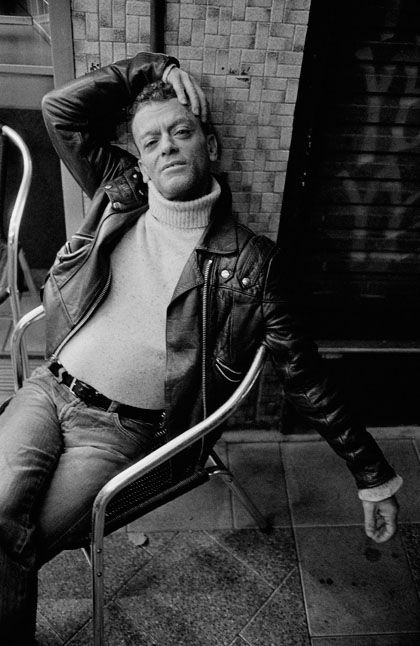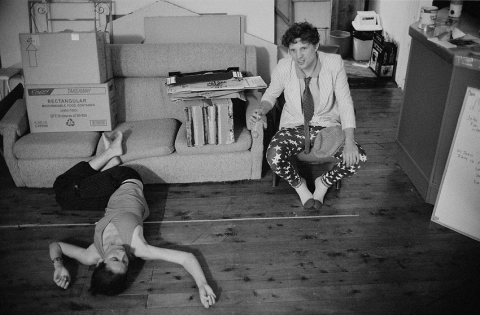Polaroid 669, Fuji FPC 100, neg recovery
January 3, 2013
A summary of some recent tests with instant film.
Above was some long expired Polaroid 669 in a Polaroid Automatic 100 camera. This was made using studio flash – the first time I had tried that with his camera. The basic exposure looks OK – the lack of contrast and colour are from the film being twenty or so years out of date.
This is the same scan after applying Auto Colour in Photoshop CS2, which is worth a try with problematic images as it gets them right about 25% of the time. Here it did a good job with the contrast and skin colour.
Above was made with in-date Fuji FPC 100 instant colour film. This was also done with studio flash however the camera this time was a Polaroid 110A converted to accept pack film. The advantage of this camera over the Automatic 100 is the option to select the aperture and shutter speed. This was metered with a flash meter and the flash was triggered with a pocket wizard unit attached to the PC socket on the lens. This wasn’t done as a direct comparison with the other camera and/or film – I was just testing my old Polaroid cameras to see how they worked with studio flash and used whatever film I had at the time.
I then had a go at recovering the negative from the Fuji FPC 100. The Fuji neg is meant to be discarded once it has transferred the image to the print, unlike some of the old Polaroid films such as 665 which produced a printable negative. I did a fast and rough job with this as it was a first attempt at seeing what results were possible. I pulled off the paper surround and then scrubbed the black backing off with household bleach. After washing and drying I scanned the neg using an Epson V700 with the neg sitting on the glass base and “film with film guide” selected.
I made two scans of the neg – one where I opened the Histogram window and set the black and white pointers to the left and right edges of the histogram. This produced the result above. For the other scan I let the scanner choose its default settings which gave the scan seen below. This does show that there is a range of possible interpretations if you are going to work with recovered neg scans, although you probably won’t get anything that looks close to the print.
Amir
January 7, 2009
Amir is one of the actors I’ve been documenting over the past 10 years. The above photo was made with a Polaroid SLR 680 using 600 type film. The camera made a good job of balancing the fill flash with the ambient light. I think this was taken late 2005.
Below photo was taken mid 2008 outside the Yeeros shop below the rehearsal space. Neopan 1600 in Diafine. These are both candid portraits, between rehearsals.
Actors 1
November 17, 2008
Marrickville, 2007 Fuji Neopan 1600 in Diafine
I’ve been photographing a group of actors for about 10 years on & off. Above are Johanna & Chris on a break in rehearsal, late 2007. Below are Baina & Ralph being interviewed as part of the process of developing their second personages Vixen & Jonty. More info can be found by clicking the link to TheatrElan in the links section.










